It’s fitting that Hawaii was ratified as a state in August. After all, you associate America’s 50th state with swaying palms, golden sand and blue waves. But the eight-island archipelago was only ratified as a state back in 1959. That means this state of islands had centuries to develop its own unique Hawaiian culture and customs.
America’s youngest state is also the most isolated chain of islands in the world. Sitting in the middle of the Pacific Ocean and the Ring of Fire, Hawaii is a six-hour flight from the west coast of the United States of America, or the “mainland” as locals call the continental 48. This isolation, three-time zones removed from Los Angeles, add to Hawaii’s cultural quirkiness. The islands have room to breathe, so Hawaii is not nearly as affected by the cultural shifts of the mainland.
And you can sprinkle some international flavor on top of its shiny newness and isolation. The majority of people living in Hawaii are of Asian descent while island natives make up the third-largest swath of the population. That means three cultures have fused on the islands to make it a true melting pot.
That means you may be left unaware of some of Hawaii’s cultural customs despite living in the same country. Don’t be caught off guard but don’t be intimidated either. The locals live the very first cultural custom to the core, so you’re never far away from a friend and mentor on the islands.
Aloha
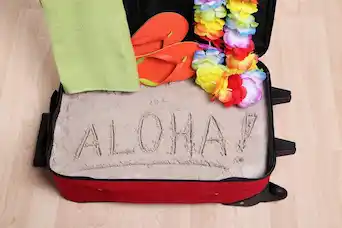 You’ve probably heard the song that tells you that Aloha means hello and goodbye. Well, that’s true, but the word also means compassion, love, and acceptance. The ancient Kahunas even used an acronym of the word, with each letter spelling out a different Hawaiian word, to teach children a friendly code of conduct. Aloha means that locals are always willing to lend a helping hand, give you some advice and they’re eager to serve as a temporary friend for as long as you need.
You’ve probably heard the song that tells you that Aloha means hello and goodbye. Well, that’s true, but the word also means compassion, love, and acceptance. The ancient Kahunas even used an acronym of the word, with each letter spelling out a different Hawaiian word, to teach children a friendly code of conduct. Aloha means that locals are always willing to lend a helping hand, give you some advice and they’re eager to serve as a temporary friend for as long as you need.
Island Time
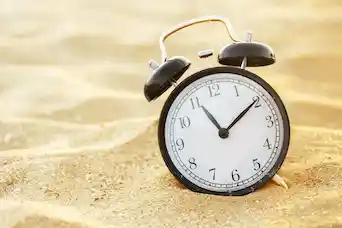 Nearly 10 million international visitors descend upon the islands every year, and many of them are seeking relaxation. They’ve come to the right place. Hawaii operates on island time where nobody is in a rush. If a local tells you to meet at 2:00 p.m., it means anywhere from 2:00 p.m. to 2:30 p.m. There’s no pressure to be in a rush on the islands. So, slow down, enjoy yourself and get on island time. It makes it a lot easier to live Aloha.
Nearly 10 million international visitors descend upon the islands every year, and many of them are seeking relaxation. They’ve come to the right place. Hawaii operates on island time where nobody is in a rush. If a local tells you to meet at 2:00 p.m., it means anywhere from 2:00 p.m. to 2:30 p.m. There’s no pressure to be in a rush on the islands. So, slow down, enjoy yourself and get on island time. It makes it a lot easier to live Aloha.
Drive With Aloha On Island Time
The mainland might be full of traffic with angry people beeping at each other, but island time means that drivers are not in a rush. And you may experience some traffic on the islands as many of the coastal “highway” roads are one lane. There’s no need to ride someone’s bumper or beep. In fact, there’s no need to use your horn at all unless you are alerting a driver to an emergency. And if you’re driving slow to take in the scenery, just make sure to drive slowly on the shoulder of the road to make room for people to pass. They might even flash you a shaka on their way by.
Shaka: The Hang Loose Sign
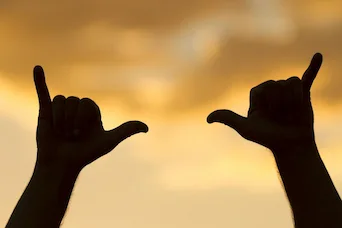 Curl your pointer, middle and ring fingers into your palm while extending your pinky and thumb. You’ve just flashed your first shaka. It’s the opposite of the middle finger. It means thank you, hang loose, rad, take it easy and right on. It’s the universal Hawaiian symbol for awesome.
Curl your pointer, middle and ring fingers into your palm while extending your pinky and thumb. You’ve just flashed your first shaka. It’s the opposite of the middle finger. It means thank you, hang loose, rad, take it easy and right on. It’s the universal Hawaiian symbol for awesome.
The origin of the shaka is two-fold. A man named Hamana Kalili worked at a sugar mill back in the early 1900s when, one day, he had an accident that cut off his pointer, middle and ring fingers. So, the sugar plantation gave him a new job -- train security.
It was Hamana’s responsibility to watch the trains rolling into the station to stop would-be thieves and ne’er do wells, but he mostly spent his time shooing away kids trying to joyride the slow-moving trains. Hamana looked like he was throwing a shaka to the kids when he raised his hand to yell at them. The kids started flashing the sign to each other to show that the coast was clear.
In his older years, Hamana directed a choir at his church where singers would raise the volume when he raised his injured hand. Unashamed of his injury, Hamana would wave to luau goers at his church’s fundraisers. Over the decades, the hand gesture gained popularity.
But the word shaka wasn’t invented until car salesman David “Lippy” Espinda ended his 1970’s car commercials with Hamana’s famous gesture and a “Shaka, brah!” Perhaps he was talking about his “shocker” car deals.
Tipping And Added Tax
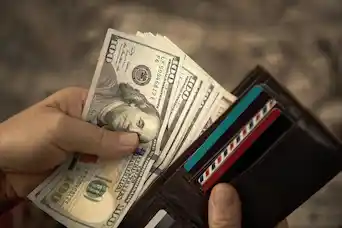 The United States of America is one of the few countries in the world that employs a tip system for services rendered. Tips are so ingrained in the Hawaiian culture of this state that many service providers -- servers, bartenders, tour guides, etc. -- are paid below minimum wage by their employers because tips are expected and factored into their incomes.
The United States of America is one of the few countries in the world that employs a tip system for services rendered. Tips are so ingrained in the Hawaiian culture of this state that many service providers -- servers, bartenders, tour guides, etc. -- are paid below minimum wage by their employers because tips are expected and factored into their incomes.
Tipping is your way of ranking service. Expected tip percentages vary for different services, but you should tip well for great service, the average for decent service and poorly for bad service. You should never tip zero. Service providers rely on tips to get by, and you don’t want your tour guide missing rent because he had a bad day.
Another cultural quirk from the mainland United States is added tax. The price you see in the store is not the price you’ll pay at the register. Hawaii charges a general excise tax on all goods and services of 4 to 4.712%, depending on your island. It’ll be added to the listed price of anything you purchase. You should factor tax and tips into your Hawaii vacation budget.
Taking Your Shoes Off At The Door
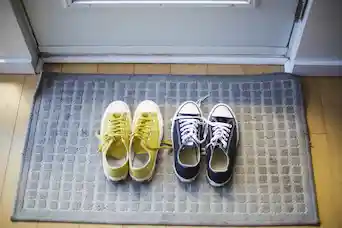 If you’re lucky enough to be invited into a local’s home, you should take your shoes off at the door. The Hawaiian custom has been imported from Japanese and Korean cultures. As you’ll notice, Hawaiian homes are lifted off the ground like Japanese homes in order to keep dirt, sand and even flood water out.
If you’re lucky enough to be invited into a local’s home, you should take your shoes off at the door. The Hawaiian custom has been imported from Japanese and Korean cultures. As you’ll notice, Hawaiian homes are lifted off the ground like Japanese homes in order to keep dirt, sand and even flood water out.
Ancient Japanese homes used braided floors, and wearing shoes into a home could crush hard-to-get dirt into the mats. Many Korean homes’ floors were heated from underneath using hot rocks, so taking your shoes off at the door was for your comfort. And the majority of the Hawaiian population is Asian, so this small sign of respect is now a part of Hawaii’s melting pot culture. As you visit Hawaii and understand more of the culture you will see how much of the Hawaiian culture never originates from Hawaii at all. Instead, it is culture modified from across the world in one bunch of islands we know as Hawaii.
Bring A Small Gift
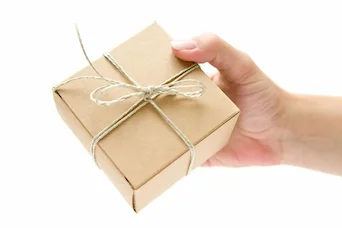 The Hawaiians use a near-spiritual word that you’ll hear during your vacation -- Ohana. This ancient Hawaiian word means family, but it also means home and it’s incredibly important to the locals. You can show your respect for their Ohana by bringing a small gift when you’re invited into a local’s home. This is an ancient Hawaiian tradition that should not be taken lightly. Treat the invitation into someone’s home like you’re invited to a dinner party on the mainland. Food is always welcomed and so is a bottle of wine. And it’s especially important to bring a small gift if you’re invited to stay overnight in a local’s house. After all, it’s a great honor so why not treat your invitees well by adhering to Hawaiian traditions and customs?
The Hawaiians use a near-spiritual word that you’ll hear during your vacation -- Ohana. This ancient Hawaiian word means family, but it also means home and it’s incredibly important to the locals. You can show your respect for their Ohana by bringing a small gift when you’re invited into a local’s home. This is an ancient Hawaiian tradition that should not be taken lightly. Treat the invitation into someone’s home like you’re invited to a dinner party on the mainland. Food is always welcomed and so is a bottle of wine. And it’s especially important to bring a small gift if you’re invited to stay overnight in a local’s house. After all, it’s a great honor so why not treat your invitees well by adhering to Hawaiian traditions and customs?
Ohana
Ohana
 Ohana is an ancient Hawaiian word that is associated with family, but the word is so much larger than that. It also means a home that extends to the entire island. So, if you do something as seemingly innocuous as litter, you’re harming the Ohana of everyone that lives on the island.
Ohana is an ancient Hawaiian word that is associated with family, but the word is so much larger than that. It also means a home that extends to the entire island. So, if you do something as seemingly innocuous as litter, you’re harming the Ohana of everyone that lives on the island.
Hawaiian families work a little bit differently than mainland families. Multiple generations live under one roof in Hawaii. Hawaiian tradition shows young Hawaiians are encouraged to marry early to add to the Ohana. Even those who go off to college often come back, marry and start having children young inside the home they grew up in. The children are raised by the entire Ohana, and you don’t have to be a blood relative to be a part of the Ohana.
Aunty and Uncle
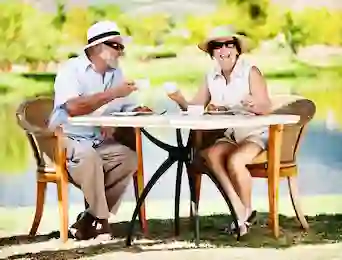 You’ll hear locals refer to unrelated friends using family terms like Bruddah, Sistah, Aunty, and Uncle. The idea of Ohana is so strong on the islands that unrelated friends are incorporated into families, and children even use the terms Aunty and Uncle as a sign of respect. This is a Hawaiian tradition that has continued on for centuries. If you act with Aloha and protect your island’s Ohana, you might even find yourself invited into an Ohana of your own. It’s a great honor.
You’ll hear locals refer to unrelated friends using family terms like Bruddah, Sistah, Aunty, and Uncle. The idea of Ohana is so strong on the islands that unrelated friends are incorporated into families, and children even use the terms Aunty and Uncle as a sign of respect. This is a Hawaiian tradition that has continued on for centuries. If you act with Aloha and protect your island’s Ohana, you might even find yourself invited into an Ohana of your own. It’s a great honor.
Respect The Ocean And Marine Wildlife
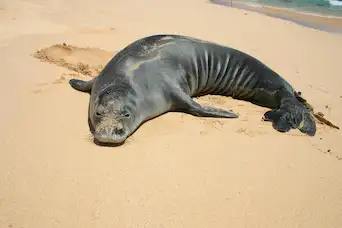 It’s no secret that the ancient Hawaiians lived off the bounty of the oceans, so it’s up to you to protect the Pacific. The ocean is such an integral part of Hawaiian life that it is a part of the island’s Ohana; it’s a part of the island’s home.
It’s no secret that the ancient Hawaiians lived off the bounty of the oceans, so it’s up to you to protect the Pacific. The ocean is such an integral part of Hawaiian life that it is a part of the island’s Ohana; it’s a part of the island’s home.
The first way to respect the ocean is to beware of its power. The Pacific Ocean can be rather dangerous at times, and you don’t want to put a local’s life on the line in order to save you. Be aware of the cross currents, drifts, rips, undertows and waves. You can check the ocean conditions online before heading to the beach, and you should always ask a lifeguard when and where it’s safe to swim. And repeat this to yourself -- never turn your back on the ocean.
Secondly, and just as importantly, it’s your duty to protect ocean wildlife and coral. Never touch, break or step on coral, and never touch any friendly marine creatures. You might find sea turtles, monk seals, spinner dolphins, and even humpback whales within touching distance when you’re in Hawaii, but touching any of these majestic creatures can degrade their shells or skin. Or, worse yet, you might even impart a parasite.
It is against the law in Hawaii to touch marine wildlife, and local law enforcement takes pride in enforcing this law. So, if you decide to take a too-close selfie with a sea turtle, you might get a ticket on top of some bad karma. Embrace Aloha, protect Hawaii’s ocean and throw a shaka at that sea turtle from a safe distance.
Don’t Take Sand Or Rocks
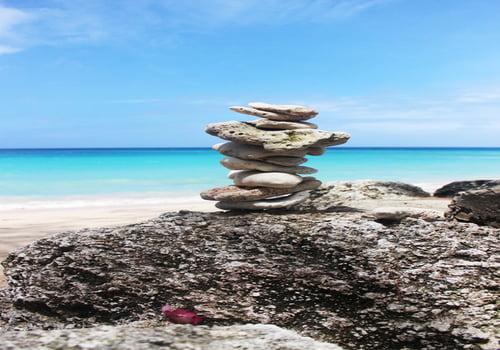 Hawaii is a study in time. Powerful volcanoes burst out of the ocean floor, rip through the surface of the water and begin to build an island. Hundreds and even thousands of years later, the island is covered in greenery as the volcano dies. The ocean then pounds the island into bits to create white sand beaches while the rain begins to wash the island away. Then, just like that, the island sinks back into the sea.
Hawaii is a study in time. Powerful volcanoes burst out of the ocean floor, rip through the surface of the water and begin to build an island. Hundreds and even thousands of years later, the island is covered in greenery as the volcano dies. The ocean then pounds the island into bits to create white sand beaches while the rain begins to wash the island away. Then, just like that, the island sinks back into the sea.
The only active volcano in Hawaii is on the Big Island which means the rest of Hawaii’s islands are washing away. And the problem is so bad that Oahu has barged in the sand to revive its famous Waikiki Beach. Don’t add to the problem. Leave rocks and sand on the island to preserve the natural beauty for future generations.
The New Sunscreen Law
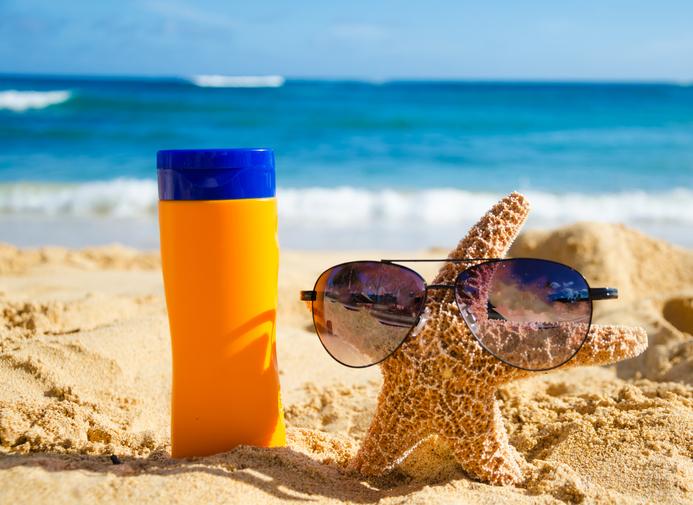 Oxybenzone and octinoxate are chemicals that kill coral reefs. Unfortunately, these two chemicals are found in many sunscreens. The state has even passed a law banning sunscreens that contain the chemicals, but the law will not go into effect until January 1, 2021. But you don’t have to wait for the law to take action. It’s easy to pop online to order non-coral-killing sunscreen before you show up to the islands, and, if you have to buy sunscreen while in Hawaii, simply scan the ingredients for these two toxic chemicals. The coral will thank you, and your skin just might thank you, too.
Oxybenzone and octinoxate are chemicals that kill coral reefs. Unfortunately, these two chemicals are found in many sunscreens. The state has even passed a law banning sunscreens that contain the chemicals, but the law will not go into effect until January 1, 2021. But you don’t have to wait for the law to take action. It’s easy to pop online to order non-coral-killing sunscreen before you show up to the islands, and, if you have to buy sunscreen while in Hawaii, simply scan the ingredients for these two toxic chemicals. The coral will thank you, and your skin just might thank you, too.
Learn Some Basic Hawaiian Words
 The two Hawaiian words that you’ll hear the most are Aloha and Mahalo. Aloha’s literal translation is somewhere spiritual. It means “the presence of divine breath” which is not so different from Namaste which some belief to mean “my spirit recognizes your spirit.” Aloha is a very heartfelt way of saying hello and goodbye, but it also expressed love, compassion, and understanding.
The two Hawaiian words that you’ll hear the most are Aloha and Mahalo. Aloha’s literal translation is somewhere spiritual. It means “the presence of divine breath” which is not so different from Namaste which some belief to mean “my spirit recognizes your spirit.” Aloha is a very heartfelt way of saying hello and goodbye, but it also expressed love, compassion, and understanding.
Mahalo can simply mean thank you, but, just like Aloha, its meaning is much deeper. When you say Mahola to someone it means that you are thanking them for being a wonderful spirit. It also means to be thankful, grateful and even to rejoice for the gifts that make life worth living.
Giving a Lei
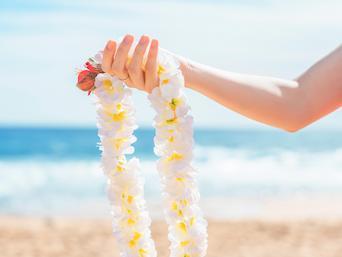 Leis came to Hawaii with the very first Polynesian settlers. Ancient Hawaiian leis were made out of flowers, vines, shells, animal teeth, leaves, seeds, nuts, and feathers. Rival chiefs even had certain leis to symbolize a peace treaty or wartime. Through the centuries, leis became a way to show friendship, appreciation and a warm greeting.
Leis came to Hawaii with the very first Polynesian settlers. Ancient Hawaiian leis were made out of flowers, vines, shells, animal teeth, leaves, seeds, nuts, and feathers. Rival chiefs even had certain leis to symbolize a peace treaty or wartime. Through the centuries, leis became a way to show friendship, appreciation and a warm greeting.
Many locals still keep a ceremonial lei made of shells for special occasions, and it’s not so uncommon to see headwear decorated like a lei. And the beautiful thing about a lei is that you don’t need a special occasion to wear one. In fact, you can even make one for yourself.
You’ll often be greeted at a tour, boat landing or airport with a lei, and there are a few rules when accepting the flowery gift. First, it’s is considered rude to reject the lei. Second, you should bow slightly to allow your greeter to place the lei around your neck. Thirdly, you should prominently display the lei with the majority of the flowery necklace hanging on your chest. Lastly, it is considered rude to take the lei off in the presence of the presenter. Basically, treat it like a kind gift that you are proud of.
A Flower Behind The Ear
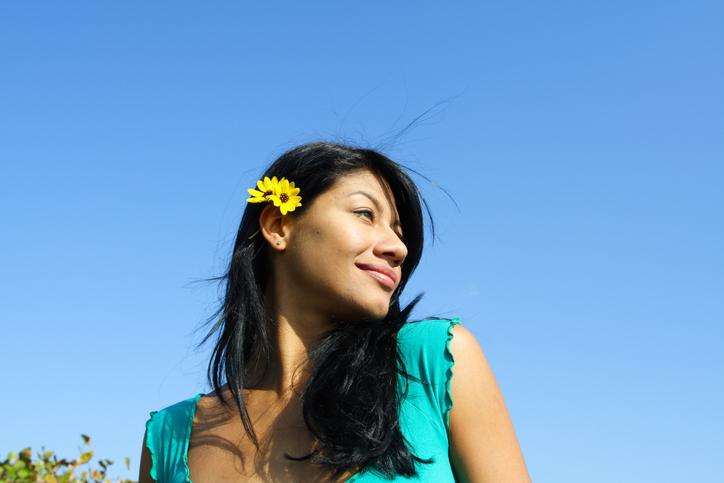 There is an abundance of flowers growing wild on the islands, especially on the Garden Isle of Kauai. In fact, there are so many wildflowers growing furiously in Hawaiian that the hibiscus blooms and dies within a single day. So don’t feel bad about plucking that tropical flower for her hair.
There is an abundance of flowers growing wild on the islands, especially on the Garden Isle of Kauai. In fact, there are so many wildflowers growing furiously in Hawaiian that the hibiscus blooms and dies within a single day. So don’t feel bad about plucking that tropical flower for her hair.
It’s customary for Hawaiian women to wear a flower tucked behind a single ear, but the placement of the flower is a means of communication to would-be gentlemen callers. A flower placed behind the left ear means that she is spoken for while a flower behind the right ear means she is looking to meet the right person.
Hawaiian Bathing
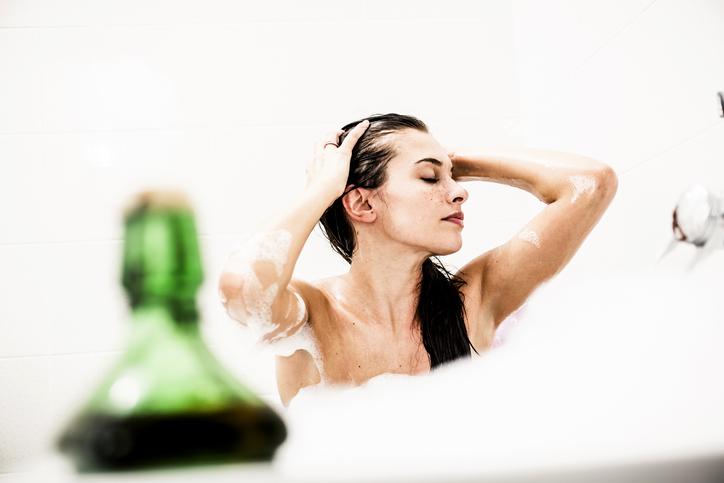 Have you ever wondered why the names of so many natural attractions in Hawaii include the word “bath.” Well, the ancient Hawaiians were said to bathe up to five times per day using a fragrant soap taken from the awapuhi plan, and you can still use this plant in your Hawaiian shower today.
Have you ever wondered why the names of so many natural attractions in Hawaii include the word “bath.” Well, the ancient Hawaiians were said to bathe up to five times per day using a fragrant soap taken from the awapuhi plan, and you can still use this plant in your Hawaiian shower today.
You’ll have to find the plant in the wild. The small ginger fern can be found on the floor of the rainforest for most of the year. The fern has a central green stalk with a bright red bulb at its top which stands a foot or two off the ground. The bulb is easy to spot as ripe awapuhi is about the same size as a small light bulb.
Pluck the entire stalk and carefully hike the bulb out of the rainforest. Make sure to respect the Hawaiian islands by only taking one of these beautiful little bulbs with you. Take the stalk back to your shower and place it in a cup of water where the bulb will stay hydrated for a few days.
Squeeze the bulb and you’ll part stacked pedals where a rich white goo will ooze out. This is the main ingredient in Paul Mitchell's products. Use it as a body wash and a shampoo throughout your stay on the islands to live like the ancient Hawaiians. It’s very mild so you can actually use it five times per day.
Surfing: Hang Ten
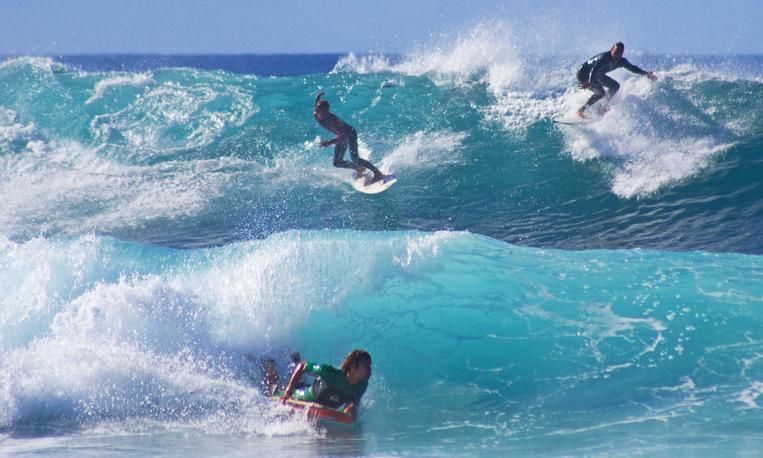 Hawaii is the birthplace of surfing. The ancient Hawaiians used to ride the waves on impossibly long and heavy wooden boards, and master surfers used to hang ten. To hang ten means to be so relaxed, balanced and comfortable on the board that you hang your ten toes off the front while surfing a wave.
Hawaii is the birthplace of surfing. The ancient Hawaiians used to ride the waves on impossibly long and heavy wooden boards, and master surfers used to hang ten. To hang ten means to be so relaxed, balanced and comfortable on the board that you hang your ten toes off the front while surfing a wave.
You don’t need any experience to get a surfing lesson in Hawaii, and the instructor will take you out on the “Keiki” waves for your safety. But there’s no better way to immerse yourself into the Hawaiian culture than catching a wave. Your excitement will echo back through the ages as you feel the same rush and gaze upon the same coastal beauty as the ancient Hawaiians. And, if you hang ten, you’ll definitely get a shaka from all the other surfers out on the waves.
The Duke
 The Duke was born Duke Kahanamoku back in 1890. He came into the world during the fall of the Kingdom of Hawaii and he survived to see Hawaii become a state before dying in 1968. In between, he served in the American Armed Forces and won Olympic gold medals for the United States.
The Duke was born Duke Kahanamoku back in 1890. He came into the world during the fall of the Kingdom of Hawaii and he survived to see Hawaii become a state before dying in 1968. In between, he served in the American Armed Forces and won Olympic gold medals for the United States.
But it’s what The Duke did with the Olympic fame that makes him such an important figure in Hawaiian culture. He toured the world putting on swimming exhibitions after he won his Olympic medals and he used those exhibitions to show world surfing. It caught on like wildfire, and now you’ll find Duke statues all over the planet. He gets credit for being the worldwide father of the sport.
He came back from his exhibition trips to settle on Oahu where he became a police officer, and he ended up staring in movies while maintaining his island job. Now you’ll find his statue as well as his restaurants all over the Hawaiian islands. And you might even run into one of his restaurants on the mainland.
Wearing slippers (flip flops)
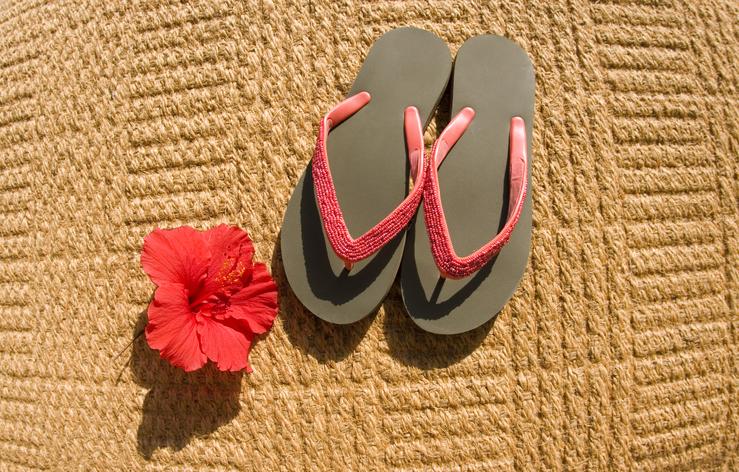 The world has many names for them -- zoris, jandals, and thongs -- but the flip-flop is known as a slipper in Hawaii. Well, to be more specific, they are known as “slippahs.” Hawaiian locals wear them all the time; to the beach, the restaurant, the bar and to work. There’s no wrong time to wear slippers in Hawaii.
The world has many names for them -- zoris, jandals, and thongs -- but the flip-flop is known as a slipper in Hawaii. Well, to be more specific, they are known as “slippahs.” Hawaiian locals wear them all the time; to the beach, the restaurant, the bar and to work. There’s no wrong time to wear slippers in Hawaii.
The 1960’s boom of California beach culture may have made flip-flops popular on the mainland, but a New Englander turned Hawaiian locals made the best of a bad situation in the 1940s to popularize the rubber open-toed shoes on the islands.
Elmer Scott was a cobbler that came to Hawaii looking for work. During the 1930s, he made rubber boots for plantation workers. Materials then became scarce during World War II, so he started using what he had to make slippers. He used his familiar and durable boot rubber.
The Scott family still runs a slipper business in Hawaii. You can buy a pair of Scott Hawaii rubber slippers during your vacation, and you’ll be patronizing a local business run by Elmer’s son Jerry and his two sons.
Experiencing The Hawaiian Culture For Yourself
If you have felt that the Hawaiian culture is something you need to witness first hand, book a trip to your own paradise vacation. To avoid the stress of planning consider the experienced Hawaiian Planner. Explore how the Hawaiian Planner can make your island paradise dreams come true.